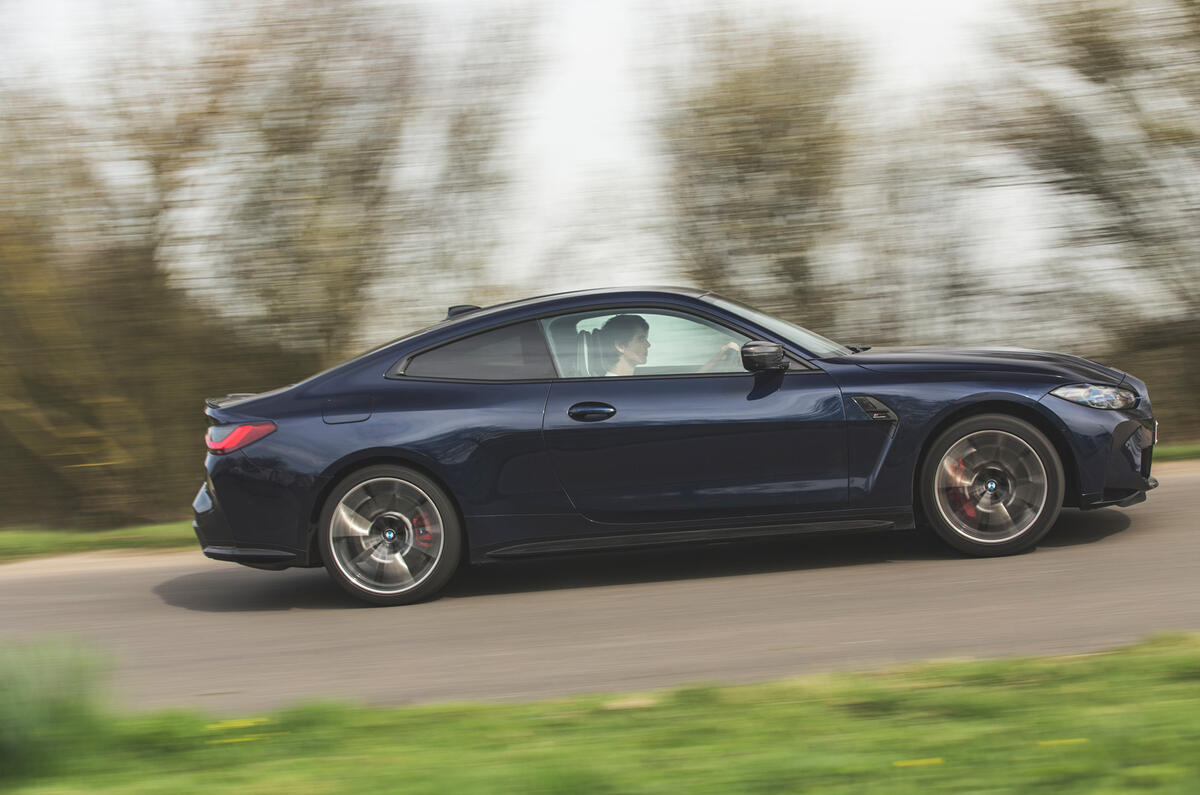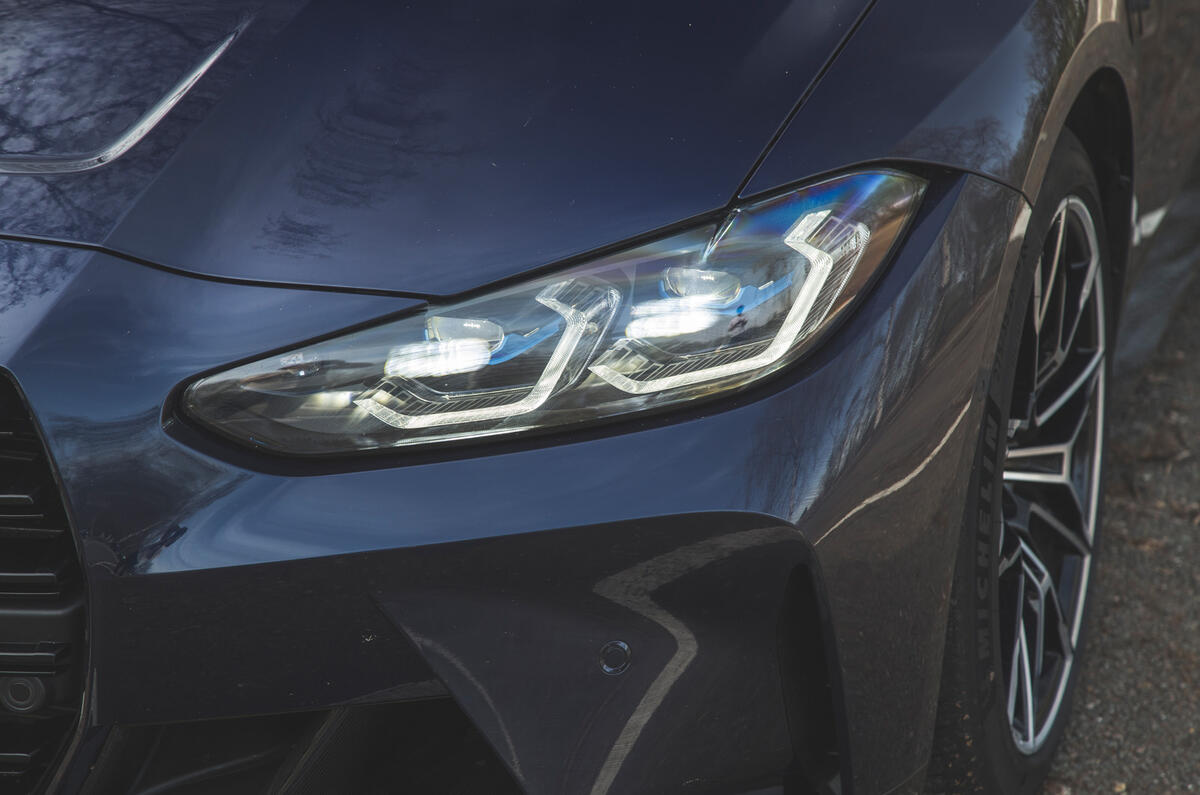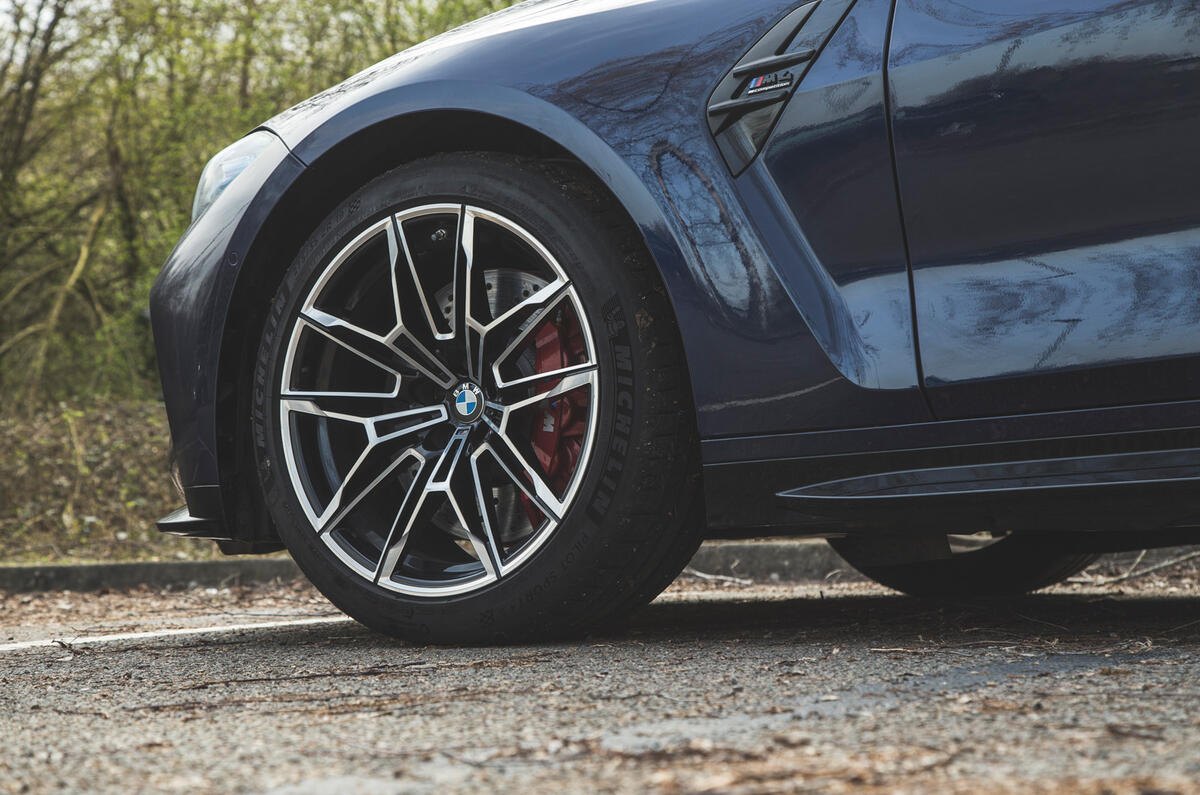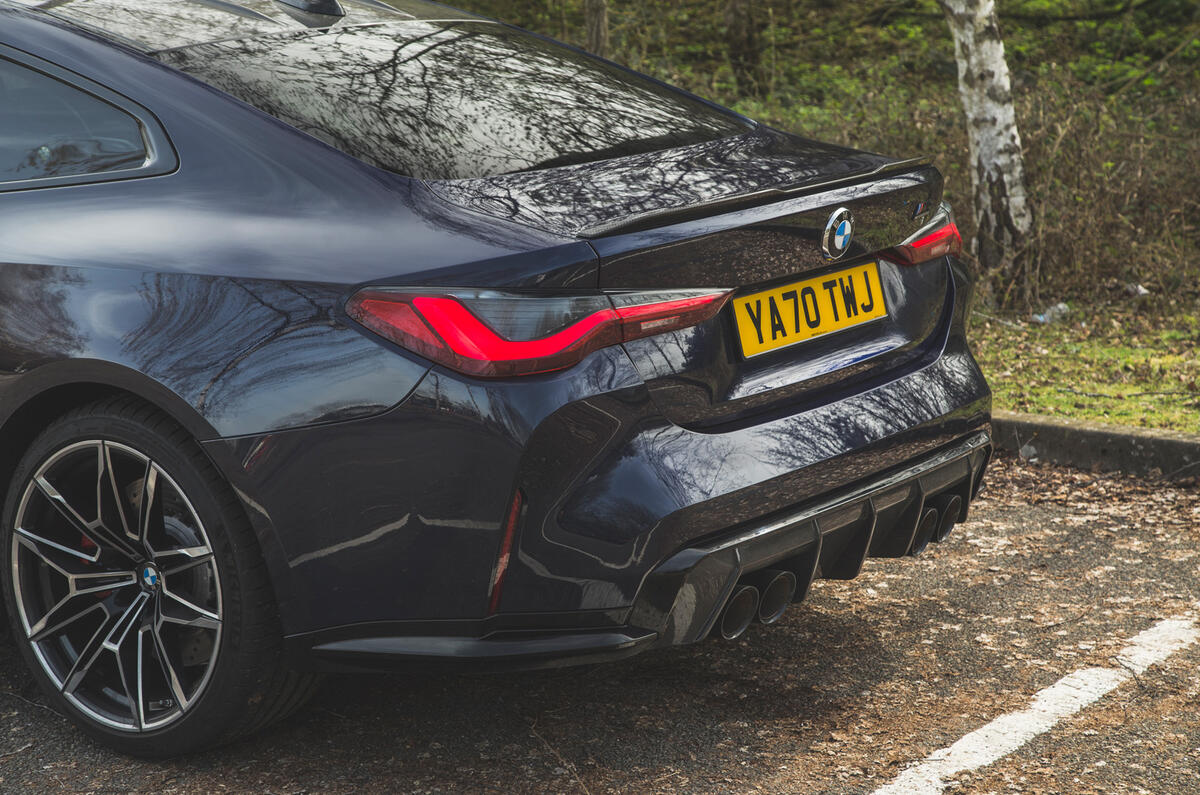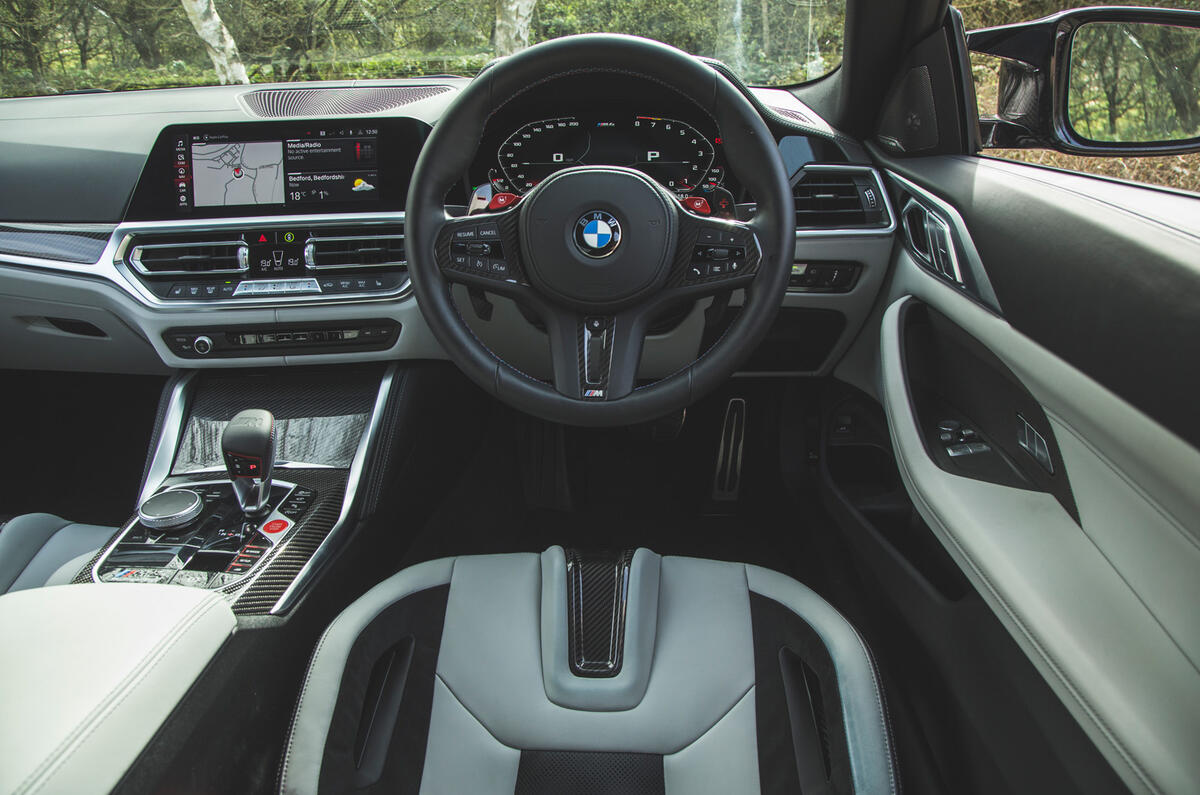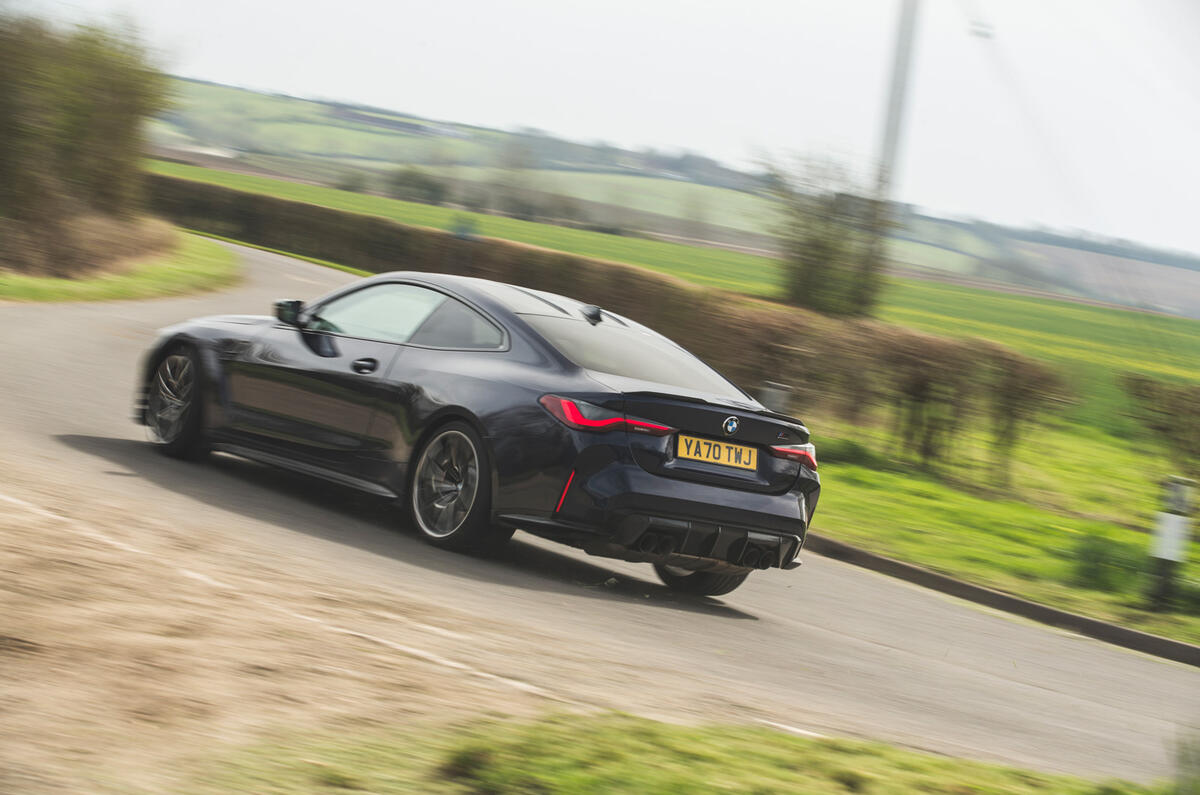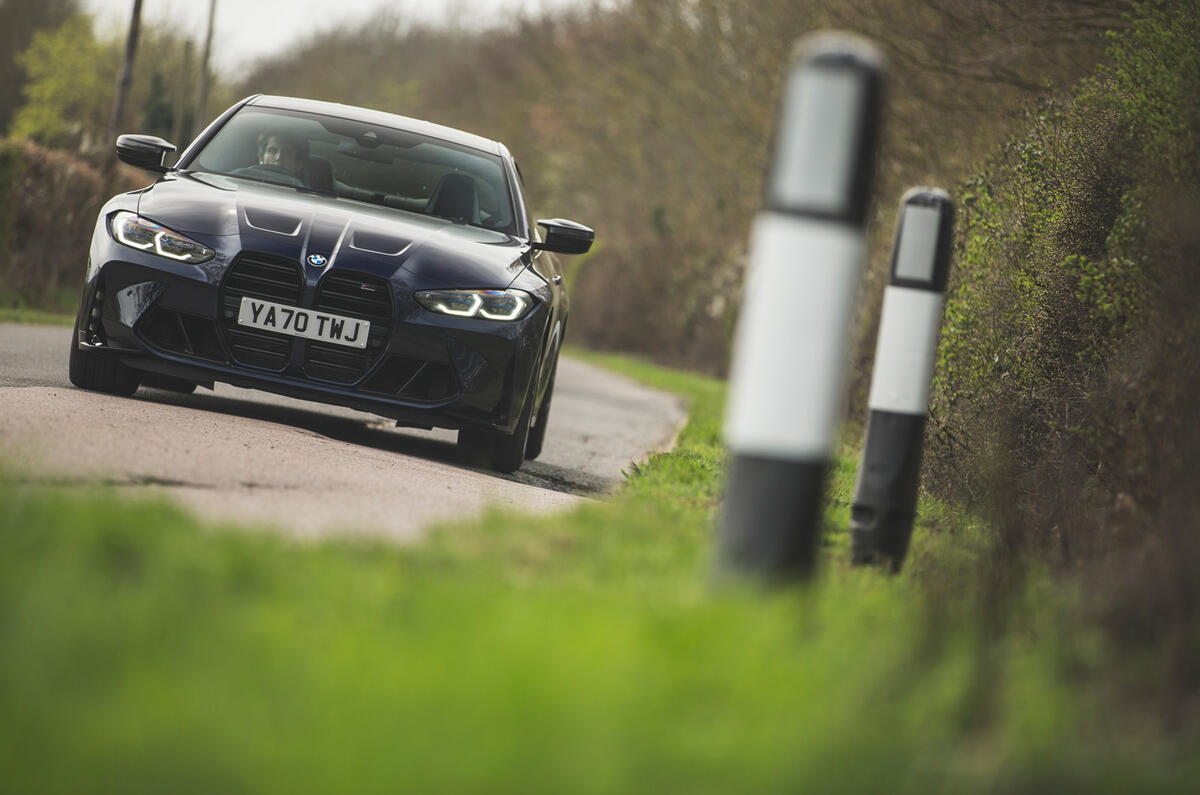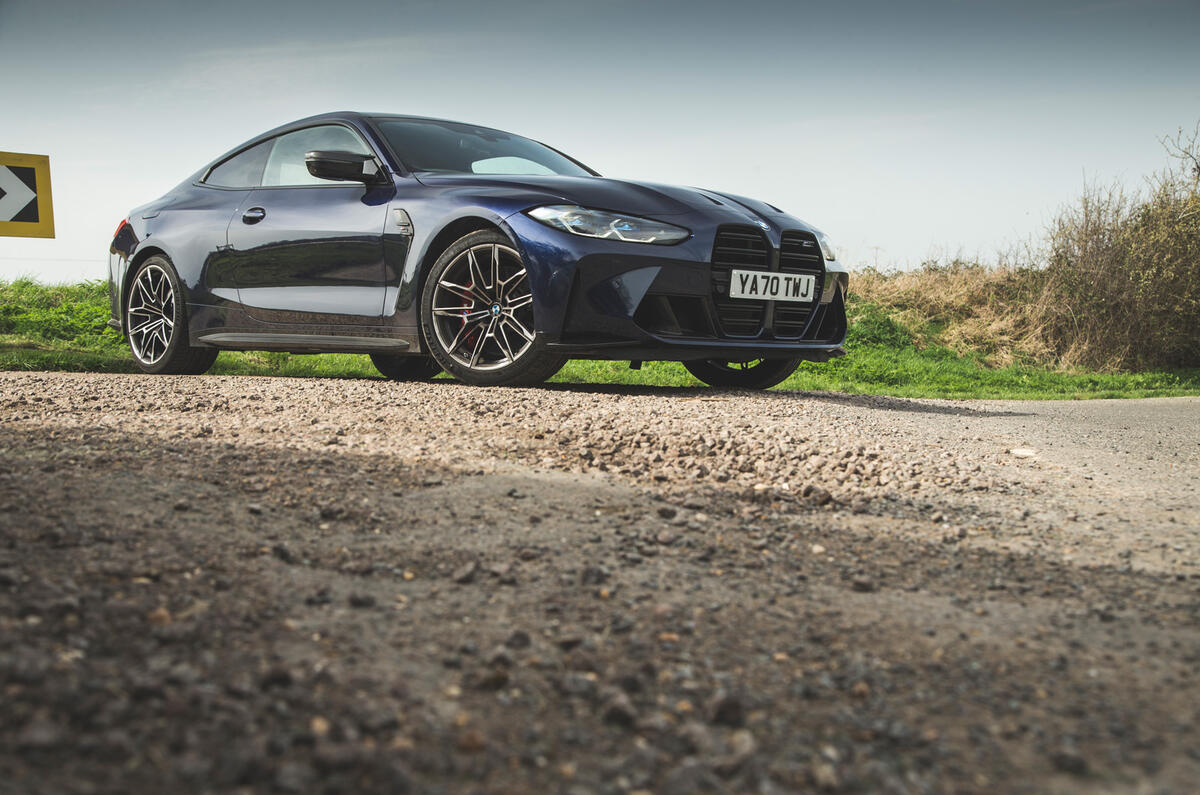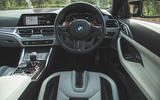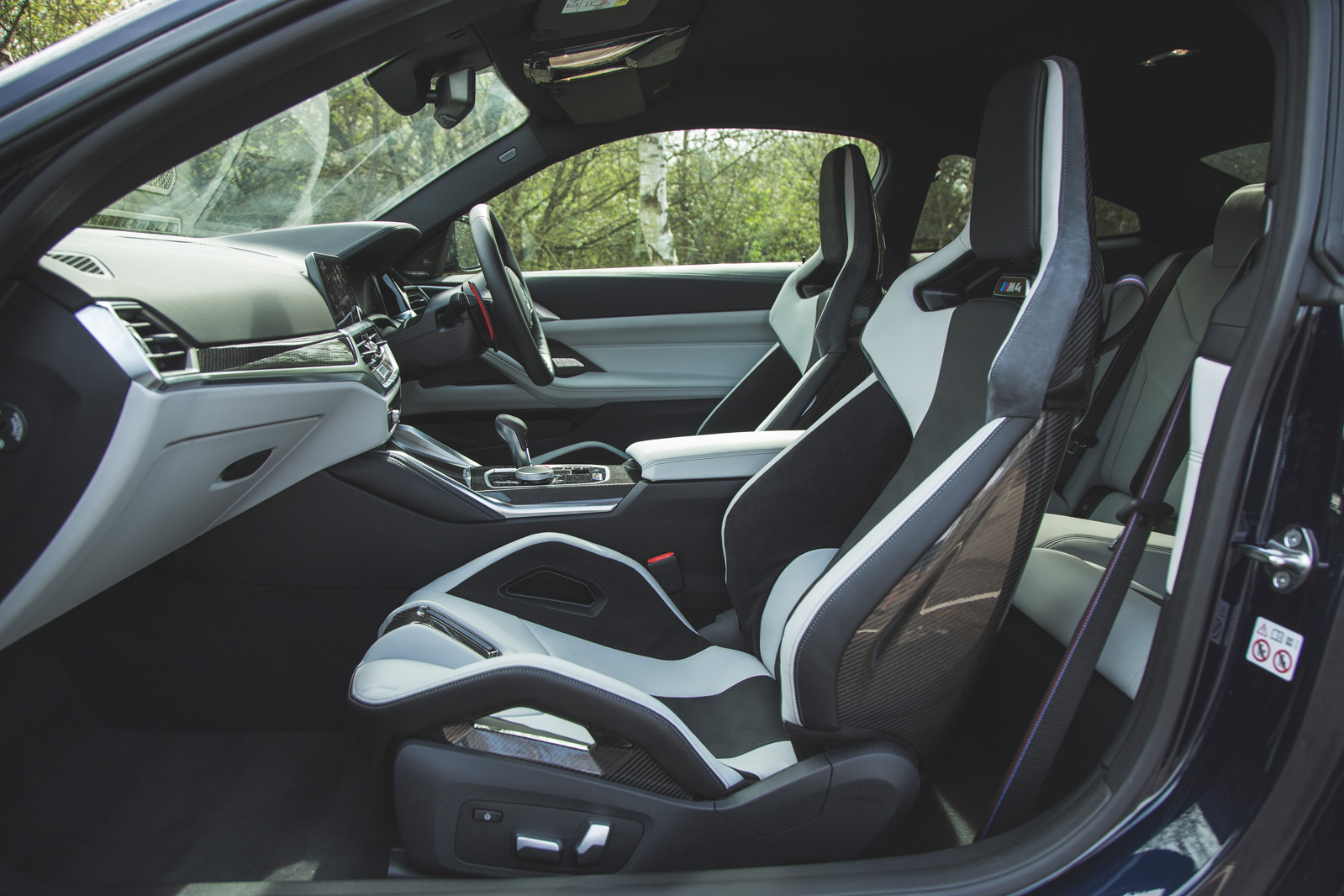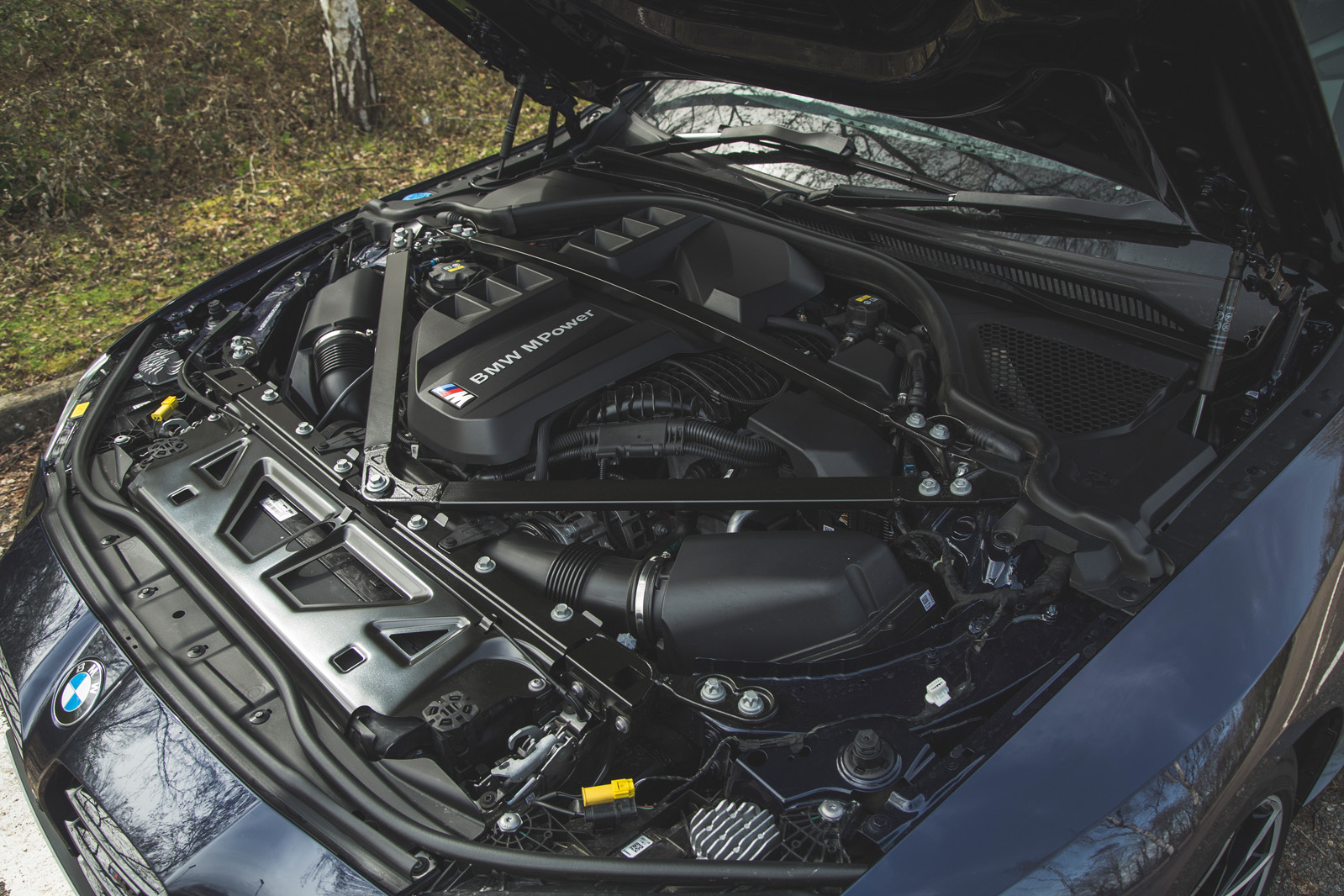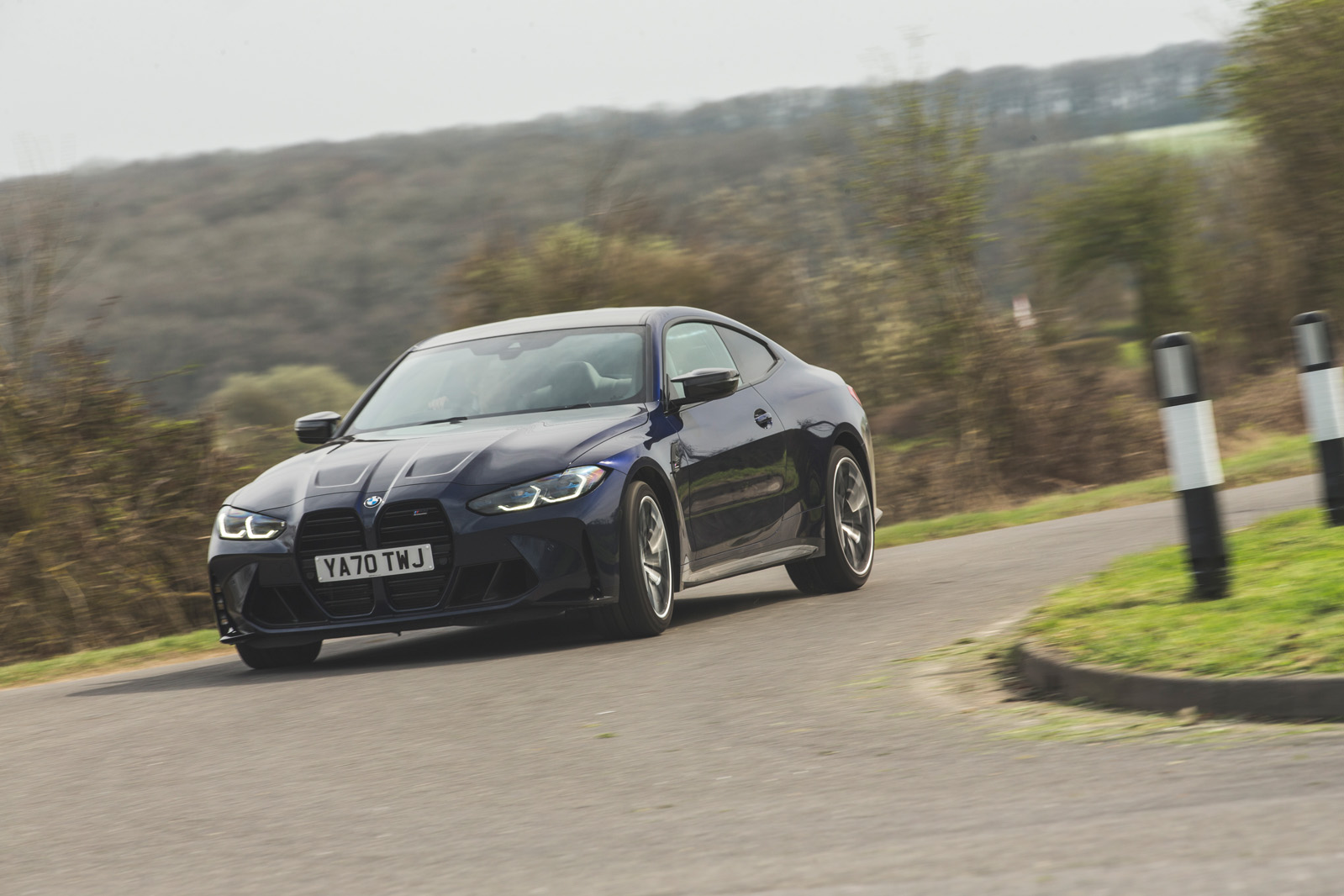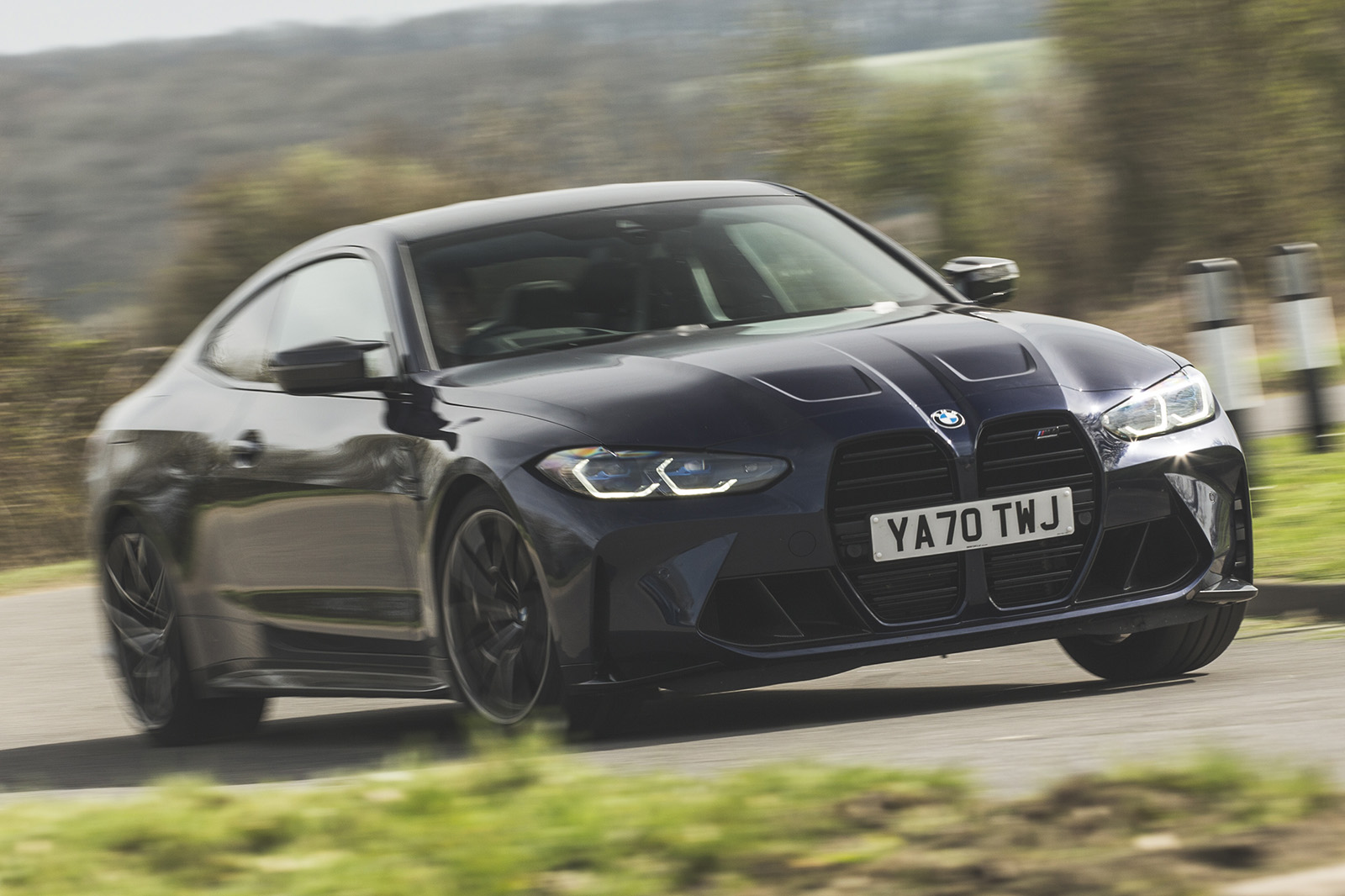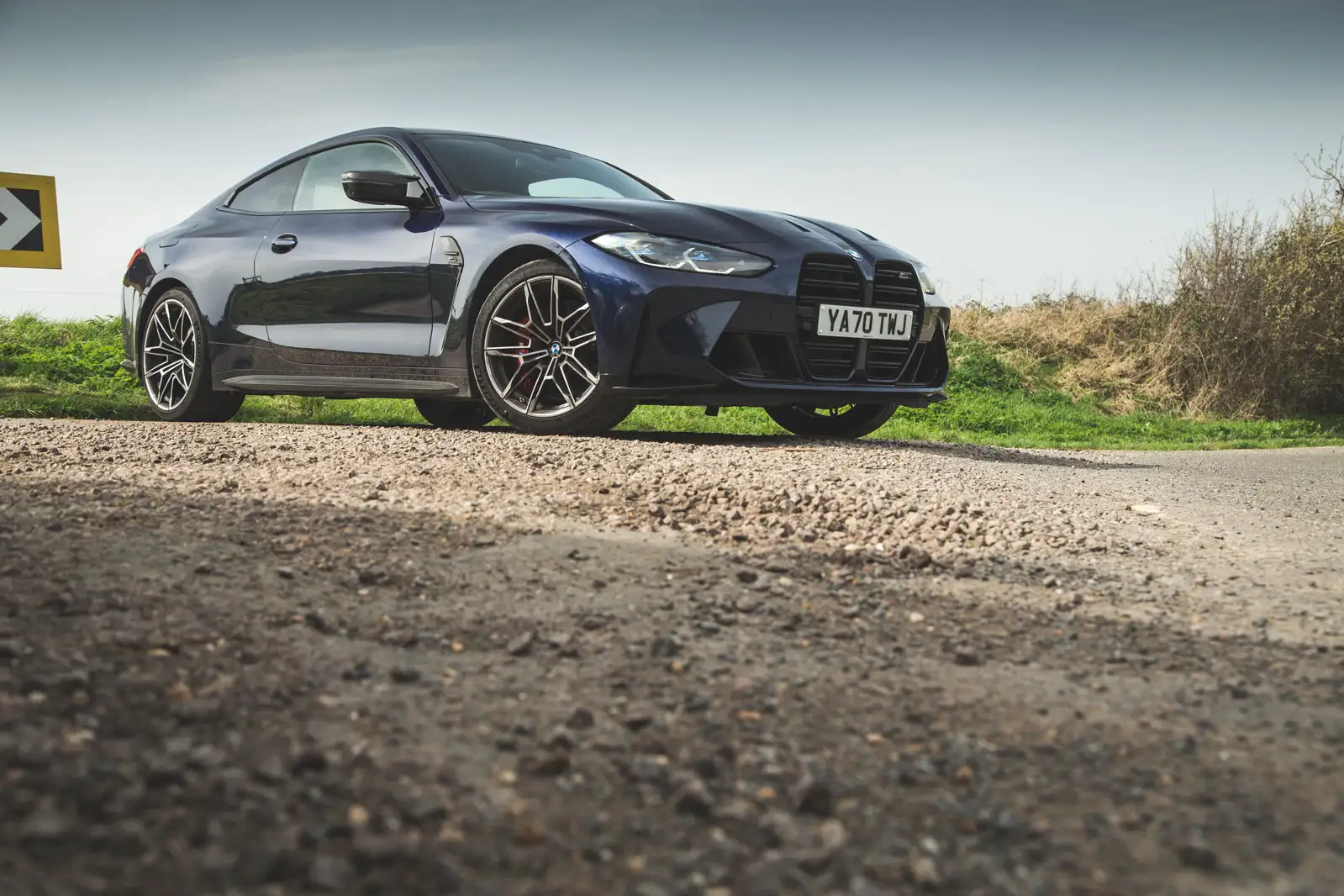The M4’s optional M Carbon bucket seats drew some criticism – giggles of amusement, even – from our jury. On our test car, these came as part of a £6750 option pack (you can have them as a £3400 stand-alone option) and they are, as we’ll explain, pretty phenomenal chairs once you’ve got yourself settled in them.
However, a raised insert that could be half-intended to hold your thighs in place not only looks daft (one tester likened it to a carbonfibre codpiece) but also seems like a trivial, obstructive affectation in a road-going sports coupé. In a racing car, your thighs might well benefit from some additional bolstering, if it worked. But here? Come on, BMW.
It’s tricky to shake the feeling that the seats themselves, along with the numerous other flashes of carbonfibre throughout the cabin, are on some level merely affectations. The M4, remember, is no lightweight.
It tipped our scales at 1800kg with a full tank of petrol, and although the M Carbon seats do contribute to a 9.6kg weight saving over the standard front seats, don’t be fooled into thinking they’re representative of a genuine weight-loss programme. They’re still electrically adjustable and fully heated, after all.
Judged as the modern, luxurious driving environment that it is, however, the rest of the M4’s cabin is excellent. Its hides and metallic decorations look and feel plush and expensive. Then there’s the general sense of solid tactile quality evident all around, which is pervasive. Of all the current crop of fast compact executive options and their coupé relations, from Alfa Romeo, Mercedes-AMG and even Audi, the new M4 is now the most expensive-feeling to sit in.
It’s spacious, too. Admittedly, rear-seat passengers will have to duck down and squeeze themselves in behind the front chairs in order to access the rear bench, but once they’re in, all but the tallest will find adequate space for occasional travel.
Typical leg room in the back stands at 730mm (more than you’ll get in a Volkswagen Golf), while head room is a lesser 870mm. Ultimately, it’s the latter that will prove to be the problem, but on shorter trips two average-height adults should be comfortable enough back there.
BMW M4 Competition infotainment and sat-nav
The M4 Competition’s infotainment specification is generous indeed. Live Cockpit Professional, which incorporates a 10.25in touchscreen and BMW’s Operating System 7.0, is a masterclass in graphical sophistication, ease of use and visual ‘wow’ factor. Sat-nav, DAB, wireless Apple CarPlay and a range of connected services are all included as standard, and all combine to lend the M4 one of the best infotainment suites currently on the market.
However, we see once again BMW’s infotainment offering let down slightly by its awkward-looking 12.3in digital cockpit. The set-up’s hexagonal dials are still trickier to read than they need to be, and they lack a degree of configurability that’s present on rival systems from Audi and Mercedes-Benz.
The Harman Kardon surround sound system that comes as standard is a touch underwhelming. Sound quality is clear enough, but it lacks punch and can struggle to overwhelm the level of road roar that makes its way into the cabin.



